268 Movement in Small Dogs
MOVING WITH THEIR OWN ORGANS - THE BEGUILING MOVEMENT OF SMALL DOGS by David Hancock
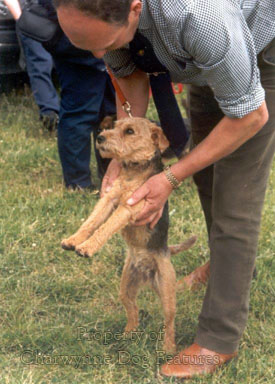 "It is shaped, sir, like itself, and it is as broad
"It is shaped, sir, like itself, and it is as broad
as it hath breadth; it is just so high as it is, and moves
with its own organs..."
Those words of William Shakespeare's could have referred to the diminutive domestic dog, which often struggles to live with what man has bestowed upon it. The tiny versions of most domestic animals are mainly admired for their perceived cuteness rather than what they do or how they function. Unwanted aggression in big dogs rightly draws condemnation; comparable behaviour in small dogs is usually either laughed off or not considered important. A similar approach seems to becoming acceptable over movement. A Great Dane which moves unsoundly is not only easily spotted but quickly condemned. A Chihuahua with appalling movement all too often gets away with it.
A jaunty carriage, a blur of legs moving at high speed and a perky determination from a small dog in the show ring often brings unwarranted admiration -- unfailingly from the fawning uncritical TV commentators at Crufts. Most very small pedigree breeds that I see in the show ring display poor movement, usually stepping short in front with little forward reach and lacking any power from their lower hind quarters. Once judges regard and then accept such limited movement as characteristic then an inbred fault is on the way to becoming sealed in the gene-pool. That is very bad news for small dogs.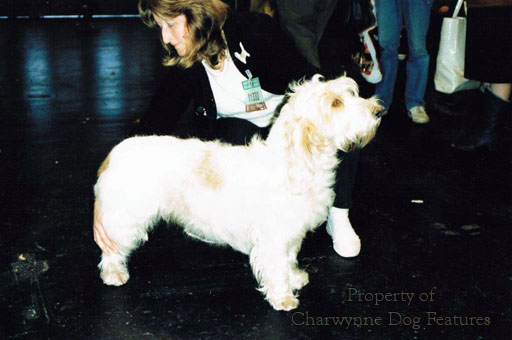
I can understand, without supporting, poor movement in Toy breeds being condoned, so many have anatomical designs which create such an undesirable manifestation, but unsound movement in small terriers is worrying. These are sporting breeds. If any small terrier breeder states firstly that he doesn't want his dogs to go to ground and secondly that he has no intention of using them to hunt ground vermin, that is a personal choice. But for such a breeder to go on to try to justify a physique on his dogs which precludes such activity is a dereliction of duty. Such people should either choose a non-sporting breed or, even better, move on to stuffed dogs on wheels. The sporting terrier is part of Britain's great sporting heritage and even the smallest of them must be a real terrier, in build and in attitude. Exhibits from any sporting breed should be disqualified in the ring for poor movement.
But what are the judges saying about movement in the smaller breeds in their critiques? Here are some from 1997: Border Terriers -- "Movement is still a problem..."; Petit Basset Griffon Vendeen (at Crufts) -- "So they paddled and waddled and their front movement was far from the required straight-reaching action..."; Welsh Corgis (Pembroke) -- "...poor movement is not what we should be aiming for..."; Border Terriers (at Crufts) -- "Sadly, movement left much to be desired..."; Dandie Dinmont Terriers -- "Hind movement in some was very bad..."; Basset Hounds (at Crufts) -- "A few hounds paddled around the ring because they were back on their pasterns..."; Swedish Vallhunds -- "Movement, particularly behind, was quite appalling..." The three Crufts reports are the most worrying, for how do exhibits which display poor movement actually qualify?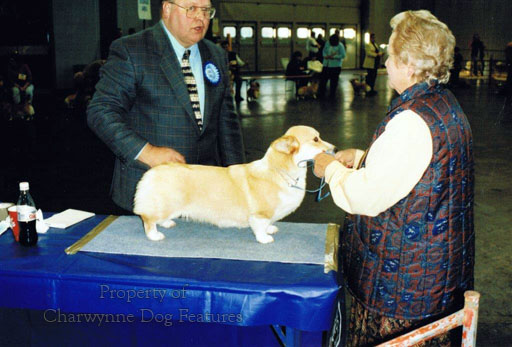
The standard of the Basset Hound states that movement is 'most important'; not important enough apparently to stop some hounds with incorrect movement from qualifying for Crufts. The standard of the Petit Basset Griffon Vendeen requires a front action that is straight and reaching well forward; not it would seem in some hounds considered good enough for Crufts. The Welsh Corgi (Pembroke)'s standard stipulates that movement should be free and active, as does that of the Swedish Vallhund. Who are the breeders, breeding to the standard, who are producing these dogs with such unsatisfactory movement? Are they judges as well? The Border Terrier is expected to have movement sound enough to accompany mounted huntsmen. The Dandie Dinmont Terrier is expected to have a fluent, free and easy stride. For these two breeds of sporting terrier to have even disappointing movement is a poor commentary on some contemporary breeders.
All the Toy breeds have clear cut advice on movement in their extant breed standards. It has not always been so. At the early part of this century, breeds like the Japanese, the Griffon Bruxellois, the Pomeranian, the Pug, the Maltese, the Schipperke and the Yorkshire Terrier had no paragraph dedicated to movement in their breed standards. And when they were judged to a scale of points, no points were awarded for movement. Books on Toy breeds at that time, such as Lillian Raymond-Mallock's, found no need to cover the subject. Nowadays, we are not only able to find no shortage of words on the subject but have the enormous benefit of video footage which permits detailed analysis. There is less excuse nowadays for exhibitors to plead ignorance of this subject than ever in the past.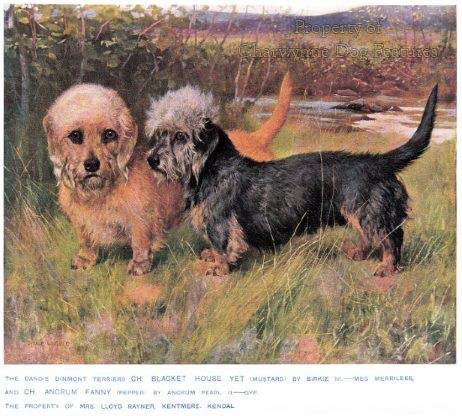
If you accept that movement is a manifestation of sound anatomy, why are poor movers not thrown out of the ring? If you look at the breed standard paragraph headed 'Faults', agreed by Breed Councils and approved by the Kennel Club, you will find a bland catch-all largely ignored by judges. If breeders and exhibitors knew that the standard had a paragraph on faults which specified poor movement as a disqualifying fault, we'd soon get some better and healthier dogs in the rings -- including those at Crufts. There is a moral dilemma here too. Why shouldn't a dog, however small, be able to move freely? A reintroduction of the scale of points, with 50 out of 100 awarded purely for movement, would undoubtedly produce sounder dogs. Surely it is shameful for any animal to be bred with anything other than sound free movement.
What I find especially baffling at dog shows is how dogs are awarded tickets when they breach their own breed standard. If you examine the wording of the breed standard of the smaller terriers on movement you find highly commendable wording. The Cairn is expected to have "Very free-flowing stride. Forelegs reaching well forward." The Dandie Dinmont is required to have "a fluent free and easy stride, reaching forward at the front" with a stilted gait highly undesirable. The Glen of Imaal has to be free in action. The Scottie has to have a smooth and free movement. The Skye's whole movement is termed free and active. The Westie's must be free with the front legs freely extended forward from the shoulder. So far, so good.
If you then spend time studying these breeds in the ring, what do you find? I see them, almost invariably, with short upper arms and upright shoulders which limit their reach and give them a fast, chopping, stilted, abbreviated front action with nothing free about it. And they win! And they win at Crufts! The profusion of coat in some of them gives the illusion of their flowing over the ground -- but then so too do millipedes. The extent of a dog's front stride is controlled by the length of its upper arm and the angulation or slope of its shoulders. The too-fast, short-reaching, chopping action of so many small terriers in the ring has almost become the norm. A good judge would notice that there is nothing free about such an action; the dog has to take two or three steps when one should do. Not surprisingly this affects hind action too. 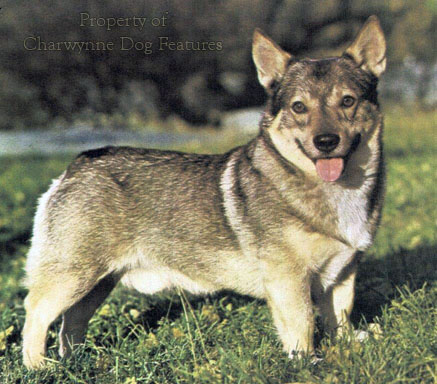
The late Tom Horner, who knew a thing or two about movement, has written on this subject: "If the upper arm is short and/or steep, the angle between it and the shoulder blade will be much greater -- more open than the desired 90 degrees -- with the result that the elbow will be brought forward on the chest and the possible length of stride of the foreleg will be reduced. If shoulders are also steep the angle will be greater still and the stride even shorter." Small terriers with a shortened front stride are now almost the uniform exhibit in our show rings. It is extremely tiresome when this draws admiration from ignorant TV commentators at Crufts, who describe them as "simply flowing over the ground", perhaps because they can't walk naturally!
When a dog's shoulders are too upright they tend also to be narrower, shorter and bunch the muscles, giving a coarse look. This in turn shortens the neck and artificially lengthens the back, producing an unbalanced dog. Breeds like the Skye and the Dandie are now longer in the back and shorter in the leg than their ancestors. Working hunt terriers are usually a little longer backed than their show ring opposite numbers but for a good reason, the long, sloping shoulder tending to accompany the slightly longer back, with the pursuit of a cobby terrier, with the shorter back, encouraging the more upright shoulder. Dogs required to work underground need flexible backs so that they can work in confined spaces. Most of the show Fox Terriers would have some difficulty manoevring underground because of the construction now apparently sought in them.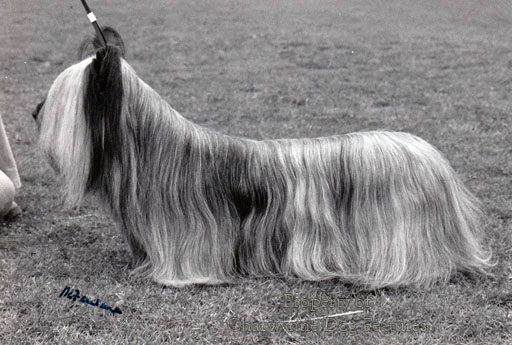
In his book "About the Border Terrier", Walter Gardner has written: "The well-laid on shoulder allows for great range and liberty of movement. On the other hand, when the shoulder blade is lacking in correct obliquity and is too upright, it usually lacks the desired length and therefore muscle attachment. The movement is therefore contracted, and the action short, cramped and lacking in elasticity." It is this short, cramped, restricted forward movement which so many small breeds demonstrate in the ring -- and get rewarded for! Walter Gardner goes on to state: "..it is unfortunate that many of those who are judging dogs have never had the opportunity to judge any other type of stock." Certainly, working horses are often stocky in build but display superbly placed shoulders. This feature is prized in the horse show ring. So many of the pioneer judges at dog shows were pony judges too.
We may not want our small terriers or our Toy dogs to move like ponies but we should try to ensure that they are able to lead active lives. A tiny Chihuahua, a sturdy Scottie, a cocky Corgi or a dainty Italian Greyhound should, each in their own way, move soundly. It is not in the best interests of such dogs for them to be allowed to get away with poor movement or be judged as if sound movement didn't matter at all. Long standing faults in Dachshunds have been short necks, upright shoulders and loose elbows. Not surprisingly movement in the breed has long been a weak spot. The high head carriage helps this breed, but it has to take an awful lot of steps to get anywhere.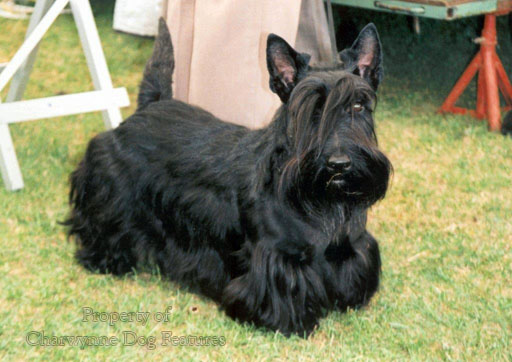
Unless the head is carried high, the appropriate muscles will not be able to pull the upper arm and then the whole foreleg forward to its full extent. Judges need to watch a dog moving across and then towards them and establish that the two forelegs are being brought well forward from the shoulders and the elbows. Any dog that 'marks time' is incorrectly constructed. Insufficient angulation between the pelvis and the spine, high placed hocks and straight stifles contribute to a short back stride and can be detected from a stilted action. But if that stilted action is actually admired, the fault is surely condoned. A canny judge will ask for small dogs to be moved slowly so that the true quality of the gait can be revealed. Just as the flying trot conceals a multitude of sins in the German Shepherd Dog, so too does the blurred too-hasty millipede-like leg movement in little dogs with little legs.
Small dogs with small bones, just as much as bigger heavier dogs, need sound construction to lead a healthy happy life. 'Stepping short' on the parade ground is a deliberately artificial movement and a surprisingly tiring one; stepping short in the show ring too should be regarded as artificial, unnatural and undesired. All dogs can only 'move with their own organs', that is, the ones bestowed upon them by their designers and breeders. But I suspect, with some sadness, that breeders will continue to do their own thing whatever the effect on the dog -- and that TV commentators at Crufts will continue to encourage them. That's life!